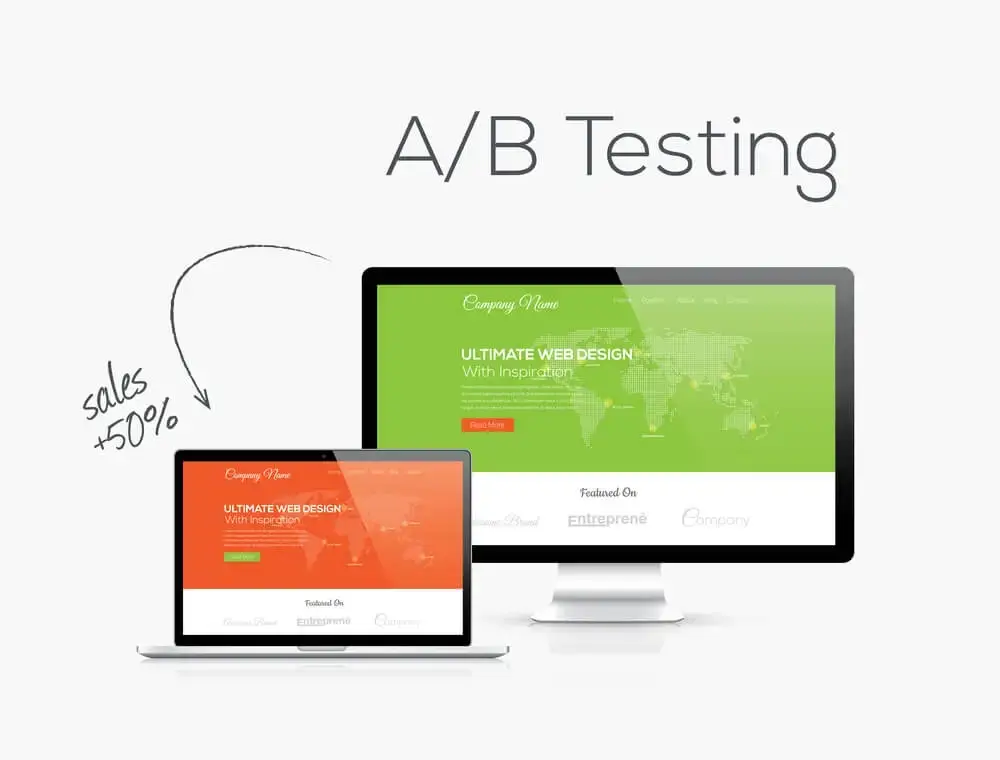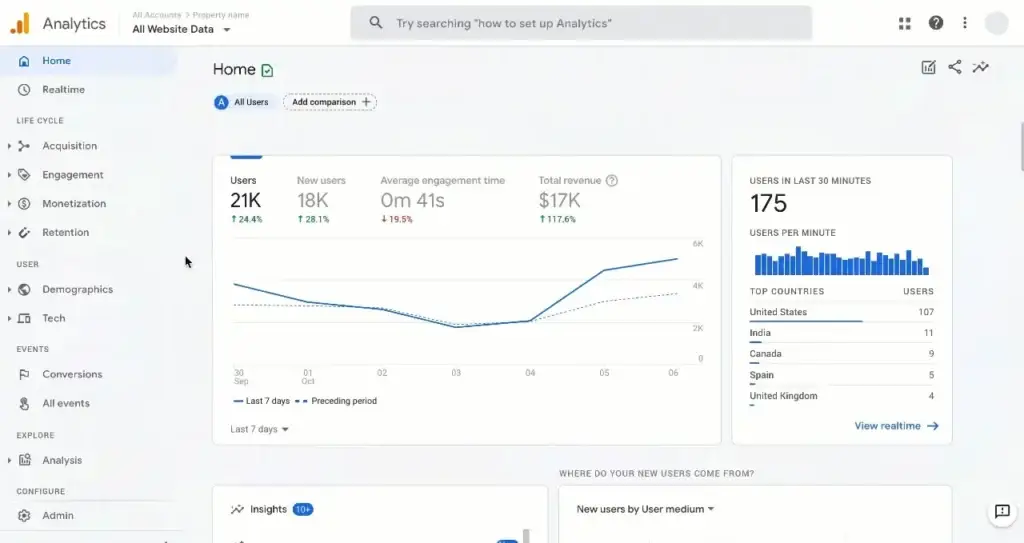So, you’ve splashed some serious cash designing your website… but the only sound you’re hearing is the deafening silence of no activity.
Frustrating, isn’t it?
Don’t fret. It happens to even the best of us.
But here’s the thing – a fancy website alone isn’t going to cut it.
You need to learn how to invest in digital marketing strategies to get your business buzzing online.
But where do you start?
We’ve rounded up the most crucial digital marketing trends and strategies you need to consider investing in.
So grab a cup of coffee, sit back, and let’s dive in.
1. Diversify your strategy
Think of your digital marketing strategy like a stock portfolio.
You wouldn’t put all your money into one stock, right?
So, why would you put all your marketing budget into one or two strategies?
Here’s the truth: throwing all your marketing budget into one or two strategies puts your business at risk.
Instead, diversify your approach.
Run your ads, but also invest in email marketing, content creation, and social media.
The most effective strategies work together to fill in the gaps where some strategies may be weak or where you’re not reaching customers.
By using diverse strategies in tandem, you reach the most customers and aren’t impacted as significantly by changes.

2. Gather and use first-party data
With third-party cookies going the way of the dinosaurs, first-party data is the new gold in 2024 and beyond.
Instead of buying information from other companies, rely on your own assets to gather customer data.
Trust me, your customers will thank you for respecting their privacy.
You can gather first-party data from various sources, such as:
- Website visitor tracking
- Digital forms and surveys
- Social media interactions
- and customer service interactions
It’s all there, just waiting for you to harness it and use it to understand your customers better.
3. Embrace email and text message marketing
Yes, email and text message marketing are still kicking and stronger than ever.
You can target specific customers and segments.
For instance, you can divide your email list by location and send out location-specific promotions to customers.
What’s even cooler is that you can track which customers open emails and text messages and how they respond to the content.
This data allows you to customise marketing to current customers based on behaviours, like how they respond to certain promotions.

4. Engage with influencers and brand ambassadors
Influencers and brand ambassadors aren’t just for fashion and beauty brands.
They’re crucial players in the digital marketing world using the bandwagon effect and authority bias.
They promote your business more personally than a traditional ad popping up on someone’s social media feed.
Their familiar faces offer product recommendations, which boosts your brand’s perceived value.
Now, I’m aware that’s a lot to take in.
And there’s even more to cover, like emerging advertising technologies, changes in media spend, and the role of AI in marketing.
But we’ll delve into those in the next part of this guide.
5. Consider video marketing
Video marketing is a game-changer.
People love watching videos, and it’s a highly engaging way to deliver your message.
Whether it’s a product demonstration, a behind-the-scenes look, or a compelling story, videos can capture your audience’s attention like no other medium.
Platforms like YouTube, TikTok, and Instagram Reels have exploded in popularity, providing ample opportunities to showcase your brand through video content.

6. Optimise for voice search
As voice assistants like Siri, Alexa, and Google Assistant become increasingly popular in households, optimising your digital presence for voice search might be a good idea, depending on what you sell.
Voice search queries are different from traditional text-based searches, and you need to adapt your content in a specific way.
Focus on long-tail keywords and natural language that people use when speaking.
Consider creating FAQ pages that directly answer common questions users might ask.
By optimising for voice search, you can increase your chances of appearing in voice search results and capture a growing segment of the search market.
7. Leverage social media ads
Social media is more than just posting cute cat videos and stalking your ex’s vacation photos.
Platforms like Facebook, Instagram, Twitter, and LinkedIn offer robust advertising features that allow you to target specific audiences based on demographics, interests, and behaviours.
You can create eye-catching ads, run sponsored posts, and even retarget users who have previously interacted with your website.
Social media advertising is cost-effective and provides detailed analytics to track the performance of your campaigns.
It’s a great way to reach a wider audience, increase brand awareness, and drive traffic to your website or landing pages.
8. Obsess with testing and improving user experience
One aspect that can make or break your success is the user experience.
Put yourself in your customers’ shoes for a moment.
Imagine visiting a website that takes forever to load, has a confusing layout, and makes it difficult to find the information or products you’re looking for.
Frustrating, right? Well, your customers feel the same way.
To improve your conversion rates and keep visitors engaged, you need to obsess over testing new ideas and continuously optimising the user experience.

Start by conducting user testing sessions to gather feedback on your website’s usability.
Watch how people navigate through your site (using heat map tools) and identify pain points that need to be addressed.
These insights can reveal valuable information about where users are spending the most time, which elements they interact with, and where they might be getting stuck.
Armed with this knowledge, you can make informed decisions about which areas of your website or marketing campaigns need improvement.
9. Invest in the mobile-friendliness of your website
If your website isn’t mobile-friendly, you’re missing out on a massive chunk of potential customers.
Seriously, it’s like leaving money on the table.
In most markets and niches, about 70% of people in any given market use mobile devices.
Let’s face it; we’re glued to our smartphones.
And when it comes to accessing information or making purchases, convenience is key.
If your website isn’t easy to navigate, loads slowly, or doesn’t display properly on a smaller screen, you can bet your potential customers will hit the back button faster than you can say “missed opportunity.”
So, how do you improve the mobile-friendliness of your website? Here are a few essential tips to get you started:
Responsive design
Make sure your website has a responsive design.
This means that the layout and content adjust dynamically based on the screen size of the device.
So whether someone is browsing on a smartphone, tablet, or desktop computer, your website will adapt and provide an optimal user experience.
No more pinching and zooming to read tiny text or struggling to click on tiny buttons.
Streamline navigation
Simplify your navigation menu to avoid confusion and the paradox of choice.
Limited screen real estate means prioritising the most important pages and features.
Keep your menu concise and organised, allowing users to find what they’re looking for quickly.
Consider using a hamburger menu icon that expands when tapped to reveal the menu options.
Optimise page load speed
People have little patience for slow-loading websites.
They expect instant gratification, so make sure your pages load quickly.
Yes, I’m guilty of this too.
Compress images and optimise code to reduce file sizes.
Minimise the use of large videos or complex animations that can slow down loading times.
Remember, a speedy website not only improves the user experience but also positively impacts your search engine rankings.
Test, test, and test
Don’t assume your website is mobile-friendly just because it looks fine on your phone.
Test it on various mobile devices and browsers to ensure consistent performance.
Pay attention to people’s feedback and analytics to identify any areas for improvement.
Remember, a mobile-friendly website isn’t just a luxury anymore; it’s a necessity.
So, grab your smartphone, load up your website, and see if it’s truly mobile-friendly.
If not, take action and start making the necessary changes.

10. Measure your performance regularly
Digital marketing success doesn’t happen overnight; it requires time, effort, and patience.
But how do you know if all that hard work is paying off?
You need to measure your performance regularly.
Set up tracking links for each of your marketing campaigns and analyse data to track the effectiveness of your strategies.
Google Analytics is a great tool for this.
It provides useful insights into user behaviour, including page views, bounce rates, most visited pages, and more.
Also, pay close attention to key performance indicators (KPIs) like website traffic, conversion rates, time on site, and cost per acquisition.
These metrics can help you understand why some campaigns perform better than others, so you can adjust your strategies accordingly.
By tracking your performance and making regular improvements, you’ll be well on your way to achieving long-term success in the digital marketing world.
Learning how to invest in digital marketing is not all science; it’s an art form
The takeaway here is that digital marketing success requires time, effort, and a willingness to experiment.
With the right strategies in place and an eye for continuous improvement, you can create campaigns that successfully reach your target audience and drive results.
By investing in digital marketing and following the tips outlined above, you can establish a strong online presence, increase brand awareness, and drive traffic to your website or landing pages.
Ultimately, this can lead to more customers and higher ROI for your business. All you need is dedication and a bit of creativity.

